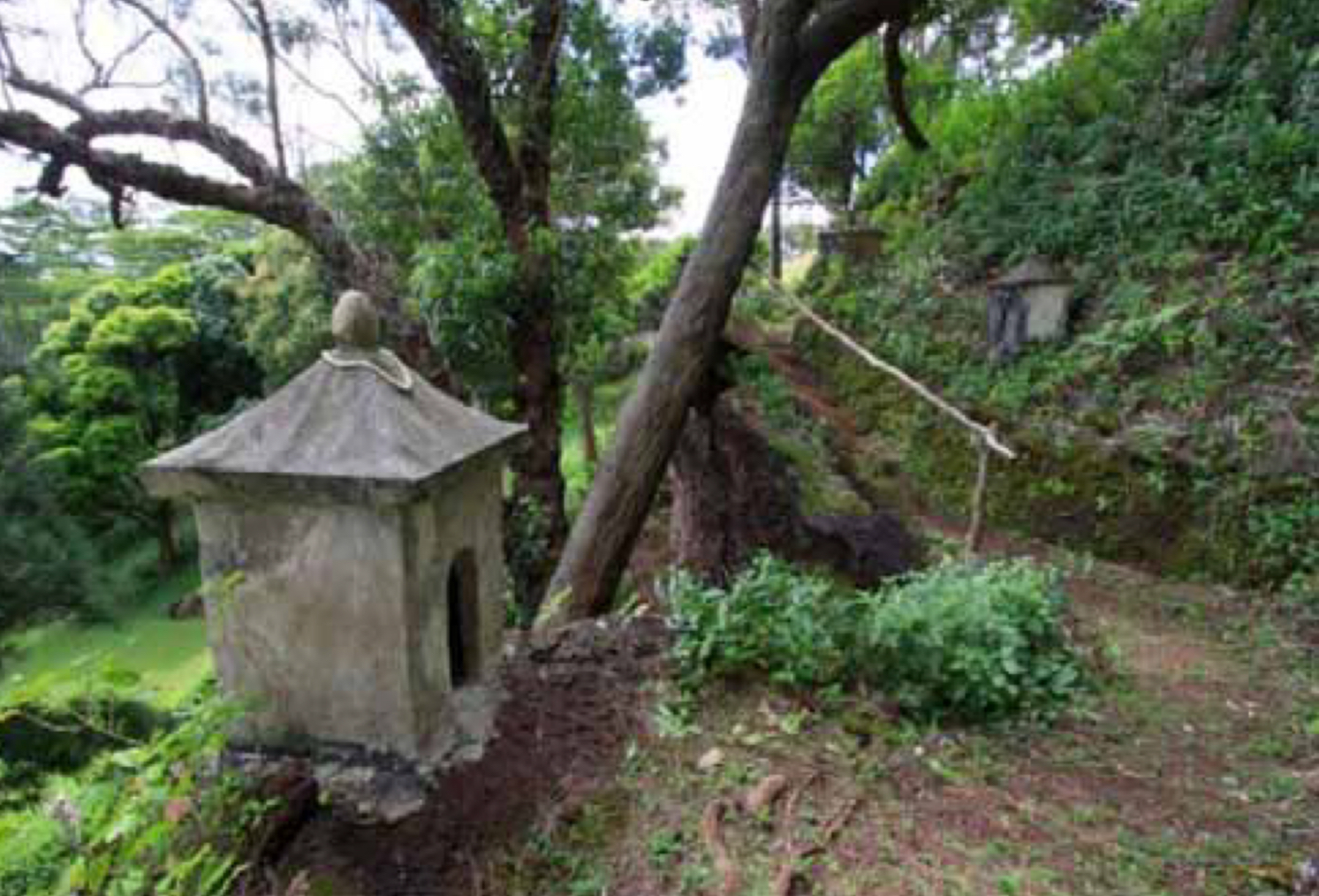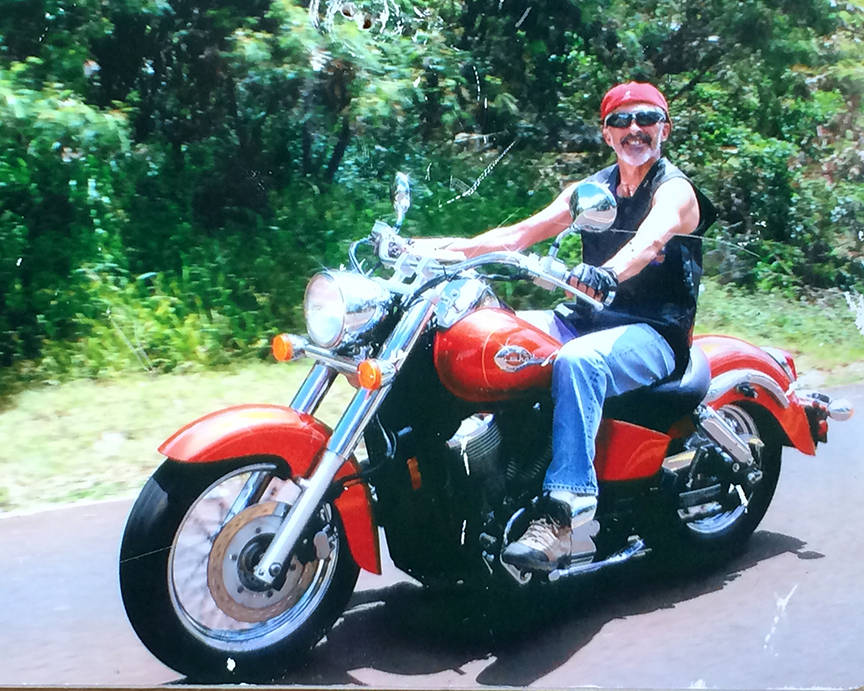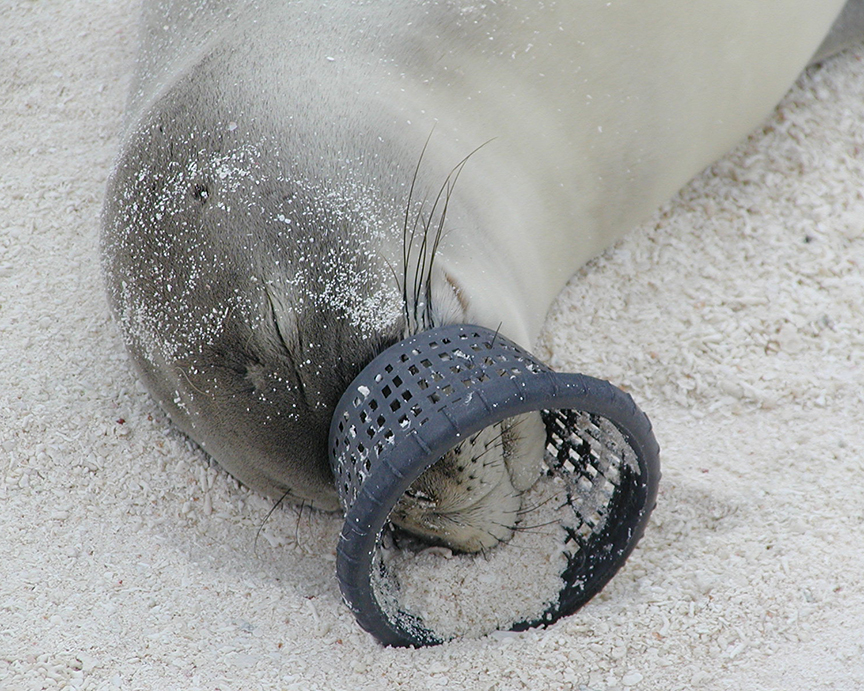
The Bon Dance at Kaua‘i Soto Zen Temple in Hanapepe. Photo by Brian Howell
The summer Obon season have been a fixed part of the island calendar, it seems, forever. During the months of June, July and August the nine Buddhist temples on Kaua‘i showcase a colorful folk festival of cultural and religious significance that have evolved in Hawai‘i for over five generations.
It is said that during Obon, the spirits of the deceased return home to visit their families. Offerings of food are placed on family altars and gravesites. Lanterns called chochins or small bonfires light the way so the spirits can find their way home. At the festival, the spirits also join in the dance. When it is time to leave, the spirits are sent off with another bonfire. In some places, small lanterns are released down river or into the sea. It is a joyous time when the spirit of life is celebrated.
Hence, Obon is a time to honor and to extend our deep gratitude to departed loved ones and ancestors. It is also a time to reflect upon our journey in life and to appreciate the people who are part of that journey.
During this time, it is traditional to offer memorial dedications to departed loved ones, fill our thoughts with remembrances, and in turn fill our hearts with joy. We express gratitude for the many blessings bestowed on us by those who came before.
This is a universal theme and is the spirit of Obon.
The Origins of Obon

Taiko Drummers at the Kaua‘i Soto Zen Bon Dance, circa 2015.
The story of Obon goes back to India and the time of the Buddha, over 2,500 years ago.
Mokuren, a disciple of the Buddha, discovered that his deceased mother was suffering. In Buddhist cosmology, Mokuren used his supernatural powers and saw that his mother had fallen into the Realm of Hungry Ghosts. She was unable to eat and was always hungry and thirsty. Disturbed, Mokuren went to the Buddha to seek answers.
The Buddha instructed him to offer food for the monks who were to complete their summer retreat on the 15th day of the 7th month. Mokuren carried out the task and saw his mother’s release. In doing so, he began to understand the nature of his mother’s past unselfishness and sacrifices that were made for him. So happy that his mother was not suffering, Mokuren danced with joy.
From this dance of joy comes “Bon odori” or “Bon dance,” a time when ancestors and their sacrifices are remembered and appreciated. Buddhism spread to China and other parts of Asia and eventually reached Japan. In the Heian period (794-1185 AD), the Bon odori evolved from a popular Buddhist chant (called the OdoriNembutsu), and by the 1600s it became widespread and popular throughout Japan, especially in the rural communities, where it provided a break from the monotony of farm life.
When the Japanese immigrants emigrated to Hawai‘i to work on the sugar plantations, it is no wonder that Obon was celebrated, so much so, to become an integral part of Hawai‘i’s rich cultural folk tradition.
Obon is a Gathering of Joy
The main focus of the festival is the Bon odori. This folk dancing is performed outdoors around a yagura (raised platform), where dancers form concentric circles. Traditional kimonos, light summer yukatas, or the less formal happi coats are worn. A tenugui (thin plain-weaved cotton towel dyed in a pattern) is used as a dress accessory, a headband or sweatband, and a dance implement. The music has a happy melody with a distinctive beat. Chochins (lanterns) hang from the yagura forming a canopy of color over the dance ring. Everyone is welcomed and encouraged to join the dance.
The festival also includes memorial services at the temple that honor loved ones who have passed. Buddhist traditions commemorate the deceased by reading out their names in remembrance. The temple services are held on Friday and Saturday and precede the dancing. At Soto Zen, pink lanterns remembering a loved one are strung around the temple each year at the Bon festival. Other lanterns of different colors, decorate the dance ring, bell tower and temple grounds. These hanging lanterns have become colorful symbols of the Bon tradition.
Food is a main ingredient of the festival and must be consumed to enjoy the full flavor of the Obon experience. The following festival foods blend traditional Japanese flavors with American or Hawaiian, to give a distinctive island taste:
- Flying saucers – like a pita pocket Sloppy Joe sandwich, grilled into shape with a pie iron; this popular Bon fare is unique to the island of Kauai
- Pronto pup – a hot dog dipped in a tasty pancake-like batter and deep fried
- Andagi – an Okinawan style sweet, deep fried buns of dough, like doughnuts
- Mochi – a sweet Japanese rice cake molded into shape and stuffed with bean paste
- manju – a type of Japanese confection, cookie-biscuit like, baked like a pastry stuffed with sweet bean paste or other types of filling
- Yakitori – chicken pieces marinated in teriyaki sauce, grilled on a skewer
Teriyaki beef – thin slices of beef marinated in teriyaki sauce and grilled on a skewer
- Saimin – Hawai‘i’s own noodle dish with Chinese and Japanese origins
- Shave ice – _Hawai‘i’s version of snow cones, with a rainbow of tropical flavors
- Musubi – a rice ball that can be plain or wrapped with seaweed called nori
- Plate lunch – the local version of the Japanese bento, starting with two scoops of rice, a main dish, and a side
For children, the most traditional festival game booth is the fishpond. For a modest price, a child can fish for a prize that is hooked to a clothespin, on a line attached to a bamboo pole.
Cultural exhibits and art displays may be featured such as ikebana (flower arranging), bonsai (miniaturized tree forms), sumie (brush painting), shodo (calligraphy), ikebana (flower arranging) or martial arts.
Lastly, the festival is a time when families and relatives gather, when friends meet other friends, and when connections among each other are once again affirmed.
Discover more from ForKauaiOnline
Subscribe to get the latest posts sent to your email.





Thanks for sharing. I read many of your blog posts, cool, your blog is very good. https://www.binance.com/pt-BR/register?ref=W0BCQMF1
Your article helped me a lot, is there any more related content? Thanks! https://www.binance.com/zh-CN/register?ref=RQUR4BEO